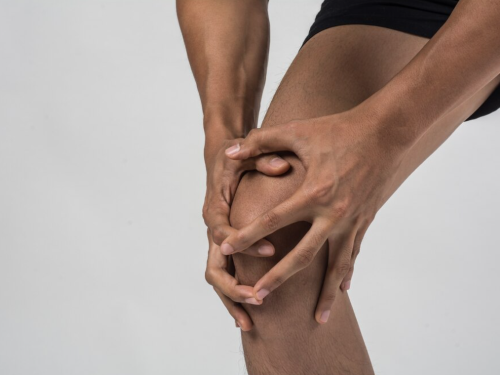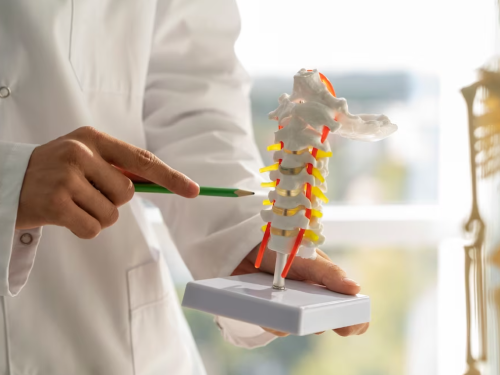orthopedic
Trauma Surgery
Trauma surgery is a specialized field of surgery that focuses on the treatment of injuries and traumatic conditions caused by accidents, falls, violence, or other unexpected events. Trauma surgeons are trained to provide immediate and comprehensive medical care to patients with critical injuries.
Key aspects of trauma surgery include:
Emergency Care: Trauma surgeons are often involved in providing emergency care to patients arriving at the hospital with severe injuries. This may involve stabilizing the patient’s condition, managing life-threatening injuries, and ensuring proper airway, breathing, and circulation.


Arthroscopy
Arthroscopy is a minimally invasive surgical procedure that allows orthopedic surgeons to visualize, diagnose, and treat problems within a joint. Instead of making large incisions, arthroscopy involves the use of a small, flexible tube called an arthroscope, which is equipped with a light and camera. The arthroscope is inserted through small incisions, and the surgeon can view the joint’s interior on a monitor.
Here are key points about arthroscopy:
Diagnostic Tool: Arthroscopy is often used as a diagnostic tool to examine and assess the condition of joints, including the knee, shoulder, hip, and ankle. It helps identify issues such as torn ligaments, cartilage damage, inflammation, or joint abnormalities.
Joint Replacement
Joint replacement, also known as arthroplasty, is a surgical procedure in which a damaged or diseased joint is replaced with an artificial joint, known as a prosthesis. This procedure is commonly performed to relieve pain, improve joint function, and enhance overall quality of life for individuals with severe joint conditions. The most common joints for replacement are the hip and knee, but other joints such as the shoulder, elbow, and ankle can also be replaced.
Here are some key points about joint replacement:
Hip Replacement: This involves replacing the damaged hip joint with an artificial joint, typically made of metal and plastic components. It is often performed for conditions such as osteoarthritis or rheumatoid arthritis.


Spine Surgery
Spine surgery refers to surgical procedures performed on the spine to address various spinal conditions or injuries. These surgeries aim to relieve symptoms, improve spinal stability, and restore function. Spine surgery may be considered when conservative treatments, such as physical therapy or medication, have not provided sufficient relief.
Here are some common types of spine surgeries:
Discectomy: This involves removing a portion of a herniated or damaged disc in the spine that may be pressing on nerves and causing pain.
Laminectomy: In this procedure, the lamina (a portion of the vertebra) is removed to relieve pressure on the spinal cord or nerves. It is often done to treat spinal stenosis.
Neurosurgery
Neurosurgery, also known as neurological surgery, is a specialized field of surgery that focuses on the diagnosis, treatment, and management of disorders affecting the nervous system, including the brain, spinal cord, and peripheral nerves. Neurosurgeons are highly trained medical professionals who perform surgical interventions to address a wide range of neurological conditions.
Here are some key aspects of neurosurgery:
Brain Surgery: Neurosurgeons perform various procedures on the brain to treat conditions such as tumors, vascular malformations, hemorrhages, and traumatic injuries. Surgeries may involve tumor removal, aneurysm clipping, or procedures to address conditions like epilepsy.


Total Hip Replacement
Total hip replacement, also known as hip arthroplasty, is a surgical procedure in which a damaged or arthritic hip joint is replaced with an artificial joint, known as a prosthesis. This surgery is commonly performed to relieve pain, improve hip function, and enhance the overall quality of life for individuals with severe hip conditions.
Here’s an overview of the total hip replacement procedure:
Indications: Total hip replacement is typically recommended for individuals with conditions such as osteoarthritis, rheumatoid arthritis, avascular necrosis, or hip fractures that have not responded adequately to non-surgical treatments.
Preoperative Evaluation: Before the surgery, the patient undergoes a thorough evaluation, including medical history, physical examination, and imaging studies (such as X-rays and MRI) to assess the extent of hip joint damage.
Total Knee Replacement
Total knee replacement, also known as knee arthroplasty, is a surgical procedure in which a damaged or diseased knee joint is replaced with an artificial joint, known as a prosthesis. This surgery is commonly performed to alleviate pain, improve knee function, and enhance the overall quality of life for individuals with severe knee conditions.
Here’s an overview of the total knee replacement procedure:
Indications: Total knee replacement is typically recommended for individuals with conditions such as osteoarthritis, rheumatoid arthritis, post-traumatic arthritis, or other degenerative diseases affecting the knee joint.


Physiotherapy
Physiotherapy, also known as physical therapy, is a healthcare profession that involves the assessment, treatment, and prevention of physical conditions and movement disorders. Physiotherapists, or physical therapists, use a variety of techniques and exercises to promote mobility, reduce pain, and improve overall physical function. Here are some key aspects of physiotherapy:
Assessment: Physiotherapists conduct thorough assessments to understand a patient’s physical condition, mobility limitations, and any pain or discomfort they may be experiencing. This assessment helps in developing an individualized treatment plan.
Plasters, Casts and Splints
Plasters, casts, and splints are orthopedic devices used in the management and treatment of fractures, injuries, and certain musculoskeletal conditions. They provide support, immobilization, and protection to the affected area, aiding in the healing process. Here’s an overview of each:
Plaster Casts Material: Plaster of Paris is commonly used for making casts. It is a type of bandage material that, when mixed with water, forms a hard, rigid structure when set.
Application: Plaster casts are applied directly to the injured limb after wrapping it with layers of wet plaster bandages. The cast is molded and shaped to provide support and immobilization.
Purpose: Plaster casts are used for the treatment of fractures and certain orthopedic conditions. They provide stability, protect the injured area, and allow for the natural healing of bones.

